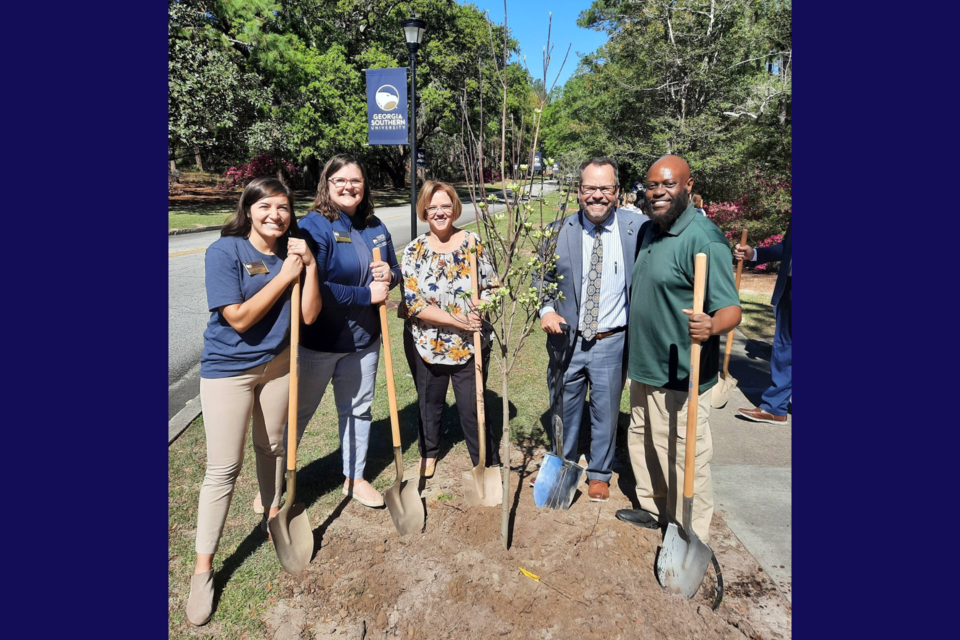Georgia Southern University’s (GS) campuses are a little greener after a number of trees were planted in honor of Arbor Day.
“Today is a part of the work that we do with Sustain Southern, and I am thankful for all of the groups and the plan that we’ve developed to make sure that we are good stewards of our environment now and in the future,” said president Kyle Marrero.
Students, faculty and staff recently came together to plant three longleaf pine trees near the Student Union on the Armstrong Campus in Savannah, and in Statesboro, 10 dogwood trees were planted along Southern Drive leading to Sweetheart Circle.
Planting trees in February allows them to better establish before the hot Georgia temperatures set in during the summer.
This is why Georgia recognizes Arbor Day on the third Friday of every February instead of on the National Arbor Day celebration in April. Due to inclement weather, the Statesboro Campus moved its celebration to March.
“When we choose to live in a sustainable world by planting trees and living in a more recyclable, sustainable way, it helps the things in our life and people become better,” said Ken Gassiot, associate vice president of student affairs.
The event was organized by Sustain Southern in the office of leadership and community engagement, the division of facilities services and student organization EcoAdvocates.
Adding to an existing canopy
The newly planted trees add to the combined more than 250 species varieties that can be found on the campuses in Savannah and Statesboro.
The most commonly found tree species in Statesboro is oak, while in Savannah, conifers, junipers and dogwood trees are most commonly found on the Armstrong Campus.
Additionally, a number of rare species and trees have also been on campus grounds since before the university existed. On the Armstrong and Statesboro Campuses, the oldest trees are oak trees which can be found on Sweetheart Circle and the lawn in front of Burnett Hall in Savannah.
The division of facilities services had to remove an oak tree on Sweetheart Circle in recent years and estimated it to be nearly 400 years old.
The Armstrong Campus is home to one of the rarest tree species in the world: The Vietnamese Cypress. Only discovered as a species in Vietnam in 1999, it is considered critically endangered with less than 1,000 living in the wild. The tree can be found in the conifer garden.
The Mexican Oak is another less common tree species found on the Armstrong Campus in Savannah. Already sparsely found outside of Mexico, deforestation and agricultural efforts have depleted many of the species in its native country.
Since its planting on campus in 2012, the tree has grown to be nearly 30 feet tall, which is considered exceptional since it’s growing outside its natural habitat. There are only a few reports of this type of tree living along the Atlantic Coast.
The Statesboro Campus is home to the Herty Pines Nature Preserve, a wooded area just off Sweetheart Circle where a thicket of longleaf pine trees can be found. The preserve is named for Charles Herty, a researcher and pioneer in the turpentine industry who developed a sustainable method of turpentine collection in the early 1900s.
The preserve is the original location of where Herty began his research developing this method, which extended the life of trees used in the turpentine industry.
For more information, click here.




